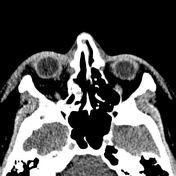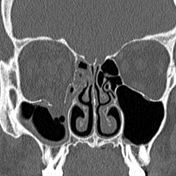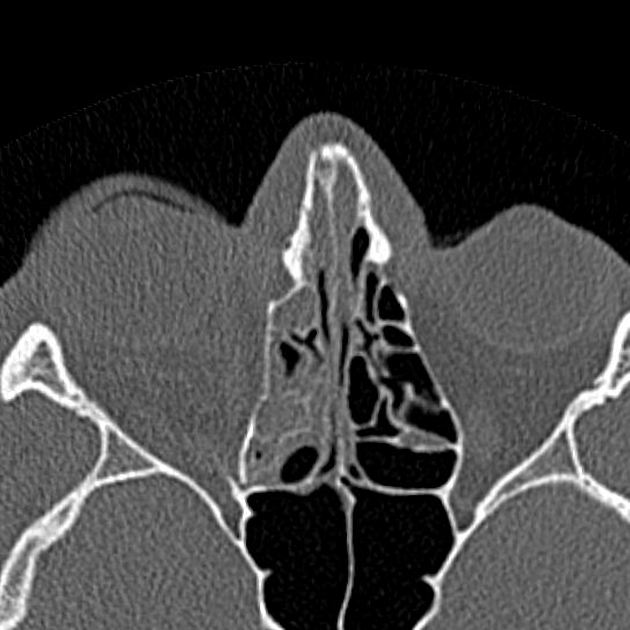Presentation
Assaulted 2 days ago. Took multiple punches to the face.
Patient Data







Right orbital blowout fractures of the right orbital floor and medial wall with involvement of the right infra-orbital canal and inferior displacement of the inferior extra orbital muscles. Orbital fat has herniated into the maxillary sinus. Large air fluid level in the maxillary sinus indicative of hemorrhage. Angulation of the nose to the right is also noted as a result of a right nasal bone fracture.
Case Discussion
CT without contrast is ideal in diagnosis of blow-out fractures. Orbital fat prolapse, muscle entrapment, globe injury and hemorrhage are important features when assessing the fracture.




 Unable to process the form. Check for errors and try again.
Unable to process the form. Check for errors and try again.